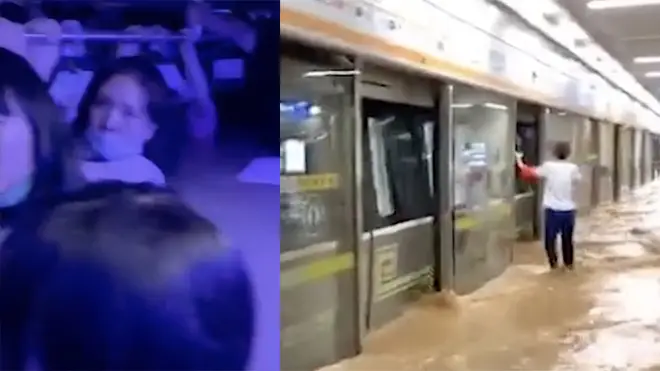
Ian Payne 4am - 7am
21 July 2021, 09:25

Terrifying clip shows passengers in China trapped in water up to their shoulders in a subway as Henan Province floods
The Chinese province of Henan has suffered horrendous flooding following days of torrential rain, with rivers bursting their banks and dams being overwhelmed.
In the provincial capital, Zhengzhou, flooding left residents trapped in the subway system and stranded at offices and apartments. Up to 12 people are known to have died.
Most of the deaths are suspected to be in the subway system. Images have emerged of flooded subway carriages and stations, showing passengers trapped in chest-high, rising water, with torrents passing outside the carriage doors.
The majority of passengers were rescued, although some videos circulating on social media appear to show dead bodies. The subway system and inbound flights were later suspended.

Over 100,000 people have been evacuated as pictures show cars and personal possessions being washed away by powerful torrents of water. Roads have collapsed across the city, and there are reports of hospitals being flooded and suffering blackouts.
As well as videos of damage, residents have also posted footage of daring rescues, including a group of people who pulled a woman out of surging water using a rope.
State media on Wednesday broadcast images that depicted water at waist height throughout much of the city, with rain still falling. Up to a year’s worth of rainfall, over 600mm, has fallen in just 3 days.
Meanwhile, the Chinese military has destroyed the Yihetan dam, which was damaged by the flooding. This allowed the release of water and reduced a further threat to life in the nearby city of Luoyang.
Flooding is a regular occurrence in China during the summer, but increasing urbanisation and climate change has increased the severity of the incidents.